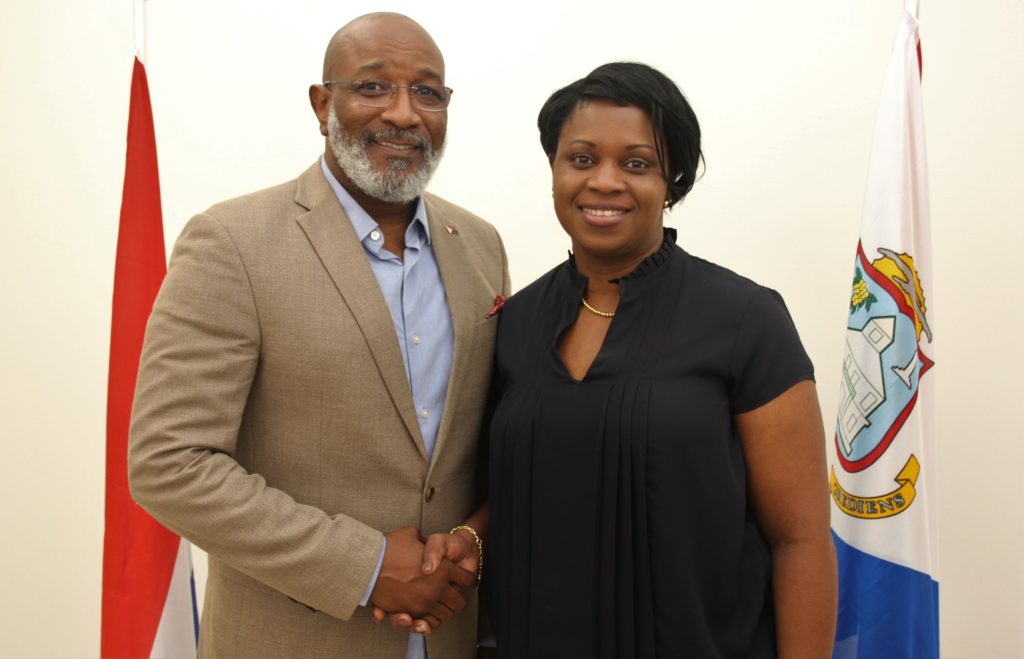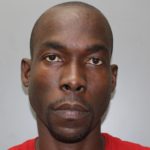PHILIPSBURG — Claret Connor, the newly appointed director of the Sint Maarten Recovery Program Bureau, says he is humbled by the opportunity to rebuild his country after it was wrecked by Hurricane Irma in September 2017.
Born and raised in Sint Maarten, Connor, a former minister, parliamentarian and hotelier, leads the agency overseeing activities supported by the Sint Maarten Recovery, Reconstruction and Resilience Trust Fund, which is financed by the government of the Netherlands.
“I believe that connecting with people is one of the most important tasks of this position,” says Connor. “Thanks to the trust fund we can pursue investments in resilience and structural improvements. We can build a foundation for generations to come, and I feel very fortunate to be part of this.”
Q: What is your analysis of the recovery process so far?
Claret Connor: The experience we had after Hurricane Luis in 1995, which was our worst storm before Irma, taught us how you can bounce back. After Luis, we moved the majority of our high-tension electricity distribution lines underground, families learned how to better prepare for impending hurricanes by stocking up on food and necessary supplies, and the communities in general became more vigilant and knowledgeable about hurricane preparedness.
Now with the experience of Irma, we knew what we needed to do. About 80% of our GDP comes from tourism. There is very little time for self-pity and no time for delay. As a service-oriented community, we still had to go out and serve.
Although the effects of Irma were stronger, we are fighting our way back. It started on September 7, the day after the hurricane, and we have not stopped since.
Q: What are your top three priorities for the coming six months?
Claret Connor: I should first say that it was very important to establish the National Recovery Program Bureau (NRPB) as a free-standing operating entity. For that purpose, we had to temporarily put a new legal framework in place, approved by our Parliament.
I believe that one of the main tasks of the bureau is to help the community understand and communicate the procedures of the trust fund. The relationship with the World Bank requires knowledge of its policies and guidelines, and vice versa. The World Bank has to become familiar with the local situation on Sint Maarten.
Another priority will be collaboration with the main stakeholders. In this recovery process, we need to work with the private sector and the public sector. We know that capacity within the public sector needs to be strengthened, and we can help with that as well. I foresee collaborative projects with non-governmental organizations. They are our boots on the ground. Non-governmental and international organizations, such as the White and Yellow Cross, UNDP and Sint Maarten Development Foundation, have been doing a lot of reconstruction and recovery work since Irma struck. Some of this work has been funded by the local government and the government of the Netherlands, and now the NRBP can also assist with their program.
Last but certainly not least, we must take care of the most vulnerable in our society. In the months following the hurricane, persons in need were asked to come and register into the government’s social assistance program. Hundreds of persons were documented as people needing assistance with rebuilding their roofs or homes. Our approach to roof and housing repairs are not just quick fixes. We rebuild houses and roofs on the basis of resilience and sound technical foundational support to withstand future storms. The Emergency Income Support and Training Program for unemployed persons, which provides a stipend and training to participants, is another important project that has been supported by the trust fund.
Q: Has disaster preparedness become a way of life on Sint Maarten?
After Hurricane Luis, Sint Maarten reconstructed itself to a higher level and now again after Irma and Maria we have to do the same. With approximately 70% of our buildings damaged or destroyed by Irma, and as devastating as that may seem, we have to seize the opportunity to increase the level of resiliency in reconstruction. One thing we discussed with the Trust Fund Steering Committee is that we need to establish disaster preparedness teams within public institutions serving the population, such as schools and the hospital. The Ministry of Education, for example, has since implemented a safety and emergency response policy for schools to ensure that the education sector will be more effectively prepared. The Association of Netherlands Municipalities, VNG International, has organized workshops on disaster management for the health sectors, disaster response organizations and government officials here on Sint Maarten. Ministers and support staffs have also attended a number of climate change and disaster preparedness conferences and workshops to share our experiences and gather best practices.
Also, we need to incorporate disaster preparedness within our education and general information systems. Although we have worked on the ‘hardware’ side, there is also the mental aspect of ‘how to prepare for a hurricane.’ In terms of preparation, we are working together with the Ministry of Public Health, Social Development & Labor (VSA) to ensure that the people who will need help will get it.
VSA is currently developing a framework document that will encompass post-disaster psychosocial care. Training of key community representatives will be given which will help them not only to deal with traumatic situations themselves, but to also recognize persons amongst the community who may have trauma-related incidents and get them the necessary assistance. Additionally, equipping existing organizations that currently deal with psychosocial care with tools to enhance their services and infrastructure will be included in the framework as well.
We can never predict when a storm will ever hit us, nor can we predict the characteristics of any storm. Therefore, we must at all times and to the best of our ability do what is necessary to prepare ourselves. I always say that is the cost of living in paradise.



